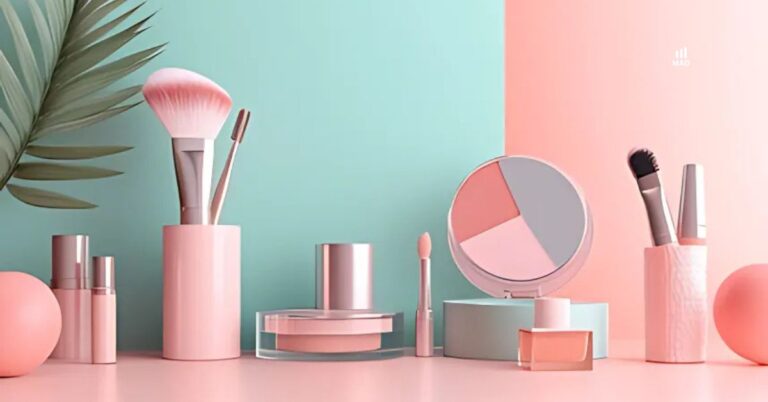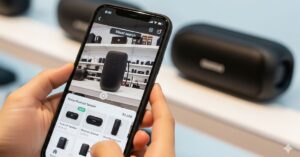
As costs rise and competition heats up, success for a beauty brand on Amazon now depends on demand generation, ad strategy, and full-funnel planning.
The opportunity in beauty on Amazon is growing.
With more than 60% of sales gains driven by increased shopper demand and 30% by channel shifts from major retailers, Amazon has become a major player in the beauty space.
But for a personal care or beauty brand on Amazon, success won’t come from simply being listed – it comes from being chosen.
The new playbook for a profitable beauty brand on Amazon
According to Beauty Independent, succeeding on Amazon now requires much more precision than simply creating a product page. The platform should be viewed as a flagship for brand building, not just as a sales outlet.
Investor perception has changed, with firms now seeing Amazon as a vital channel for prestige beauty. Brands seeking investment must demonstrate profitability on the platform and show how it fits into their wider retail strategy.
Navigating a competitive, high-cost environment
The entry of major corporations like L’Oréal and Estée Lauder has made the platform more competitive. This has created greater challenges for emerging brands trying to gain visibility.
An Envision Horizons report, The Amazon “Estée Lauder Effect”, highlighted a sharp increase in advertising costs over the past year. These rising costs are a direct result of increased competition from legacy brands.
- Overall beauty ad rates – Cost-per-click (CPC) for beauty brands soared by 248%, rising from $0.84 to $2.91.
- Overall beauty ad rates – The cost for clicks on general search terms increased by 186%, from approximately $1.36 to $3.90.
Strategic launching and demand generation
Experts advise brands to track their demand before launching on the platform. A key benchmark is to wait until the brand achieves at least 2,000 monthly branded searches on Amazon.
A successful launch must be treated like any other major retail partnership. It requires a dedicated team, sufficient inventory, a media budget, and a clear market penetration plan for the first six to 12 months.
Driving demand from other channels is a winning strategy. Success off Amazon, such as on TikTok or a direct-to-consumer (DTC) site, directly fuels success on the platform.
For example, the press-on nail brand Glamnetic heavily invests in DTC and TikTok campaigns to create top-of-funnel awareness. This strategy allows the company to capture existing demand on Amazon, rather than paying high costs to create it there.
Melis del Rey. Amazon US Health and Beauty General Manager"Social media is important for the beauty shopper. It’s the medium that influences their purchasing decisions..."
Choosing the right selling model
Brands must choose between selling as a third-party (3P) or joining the Amazon Premium Beauty program. This decision has a significant impact on margins and brand control.
- 3P Model
This model, used by brands like Glamnetic and Elemis, allows sellers to control their own pricing while using Amazon for fulfillment.
- Premium Beauty
This gated program blocks third-party resellers in exchange for a 15% fee on sales, which can be damaging for smaller brands but necessary for larger brands needing to protect their distribution.
Measuring for profitability
To ensure profitability, brands must track a variety of key metrics. It is also important to view this data within the context of the broader Amazon beauty category and competitor actions.
Key performance indicators to monitor include:
- Top-line retail sales and net sales
- Net-new customer acquisition rates
- Customer retention rates
- Total Advertising Cost of Sales (TACoS)
Ultimately, building a profitable beauty brand on Amazon requires understanding the full customer journey. Brands that optimize customer acquisition, assortment, and retention can build a sustainable business.
Winning formula from the big beauty brands on Amazon
Market Defense sponsored an article on Beauty Matter, which discussed a report on the success and the winning formula of brands that achieved significant growth, even as the broader beauty market faces headwinds.
Their success reveals a clear pattern that often begins long before a customer searches on Amazon. The most successful brands leverage deep off-platform trust, innovation, and strategic marketing to drive their on-platform dominance.
Dyson
Dyson achieved an estimated 98% year-over-year growth on Amazon by leveraging its decades-long reputation for technological innovation. Its success in beauty was built on the brand trust it established with high-performance consumer vacuums and fans.
The company entered the haircare category with iconic, engineering-led products like the Supersonic hair dryer and Airwrap styler. This pre-existing authority allowed Dyson to command a premium price point and redefine the professional hair tools category on Amazon.
- Estimated 12-Month Growth – 98%
- Amazon Rank – #2 in Hair Multi-Stylers
- Average Selling Price – $406.62
EltaMD
EltaMD has become a powerhouse on Amazon by capitalizing on its credibility within the medical community. The brand’s status as the number one dermatologist-recommended professional sunscreen builds immense trust that translates directly into sales.
This off-Amazon authority allowed EltaMD to dominate during peak interest moments, such as the 2024 Prime Day sunscreen trend on both Amazon and TikTok. By owning its professional niche, the brand now controls 40% of the Facial Sunscreen market share on the platform.
- Estimated 1-Year Growth – 88%
- Amazon Rank – #1 in Facial Sunscreens
- Total Reviews – 237,000+
Color Wow
Color Wow demonstrates how a powerful social media strategy can fuel explosive growth on Amazon. The brand pairs its on-platform investment with a robust user-generated content (UGC) strategy on TikTok that amplifies its hero products.
This alignment of on- and off-platform marketing, combined with endorsements from celebrity hairdressers, creates a feedback loop of awareness and conversion. This strategy has given Color Wow the highest conversion rate among top professional brands at 25.7%.
- Estimated 1-Year Growth – 90%
- Amazon Rank – #1 in Hair Spray
- Category Share – Dominates 58% of the Hair Styling Mousse category
Rethinking ad strategy for a beauty brand on Amazon
In this video from our Amazon agency‘s Youtube channel, I discussed why health and beauty products like makeup remover, moisturizer, and cleanser, need a unique ad strategy. Long-term growth depends on understanding customer lifetime value and using smarter keyword targeting.
Focusing on Customer Lifetime Value
For consumable beauty items, judge ad performance by a customer’s total profit over time, not a single sale. This metric is known as Customer Lifetime Value (LTV).
Understanding LTV allows for a higher ad spend to acquire each customer. It can justify losing money on an initial sale to secure future profitable buys.
Calculate LTV by multiplying your profit margin by the average number of repeat purchases. This reveals a customer’s true value and allows for a higher Total Advertising Cost of Sales (TACoS).
Using A+ Content and Strategic Keywords
A+ Content is crucial in beauty for showcasing beauty and skin care products with rich lifestyle images. It also boosts search visibility by allowing hidden keywords in each image’s alt-text field.
An effective ad strategy requires separating keyword types into different campaigns. Using broad match campaigns helps you find lower-cost clicks, avoiding the high costs of relying only on exact match.
For best results, focus on broad and exact match campaigns while spending less on phrase match. This separation provides the bidding control needed to optimize your ad spend for profit.






